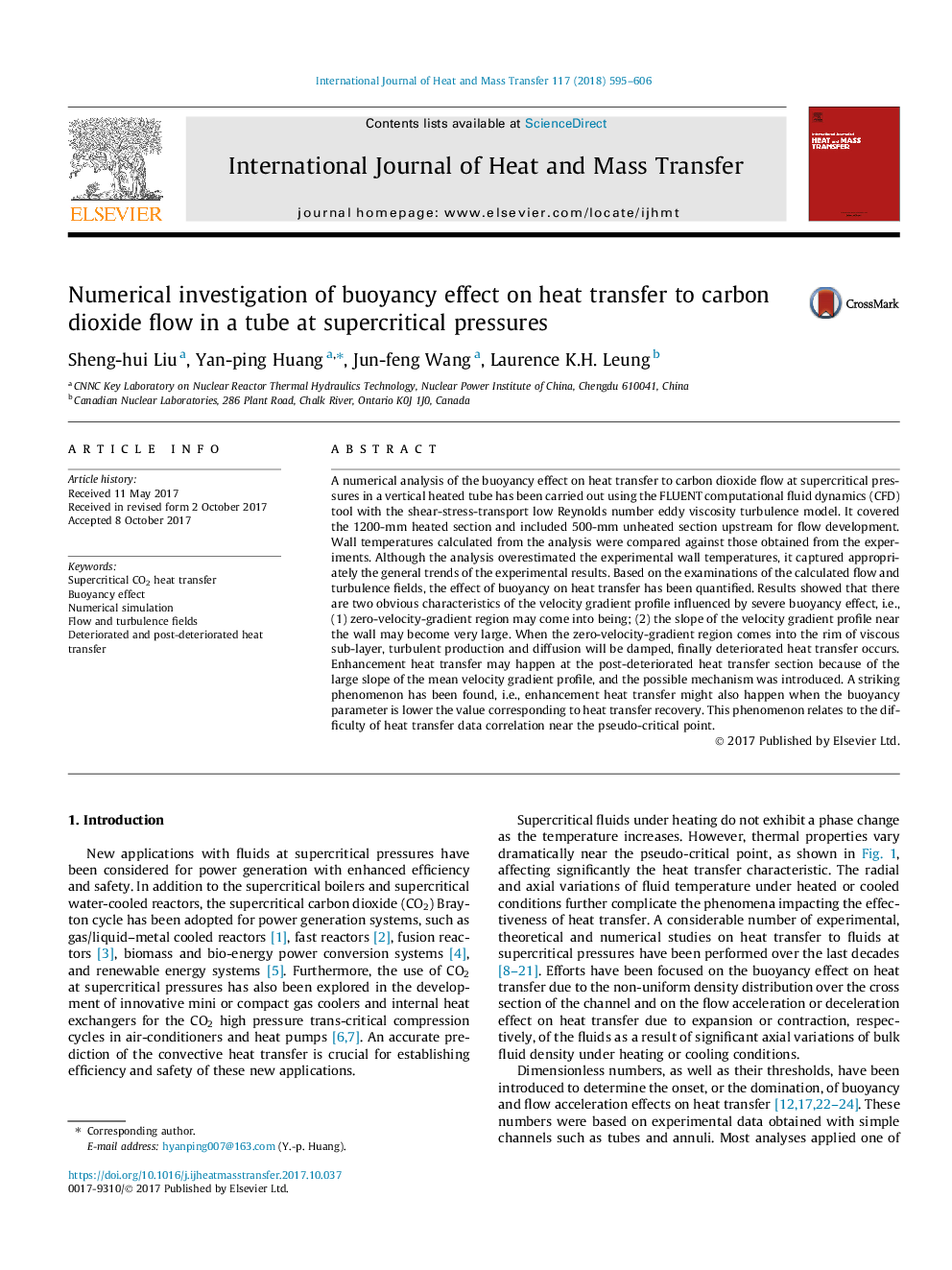| Article ID | Journal | Published Year | Pages | File Type |
|---|---|---|---|---|
| 4993426 | International Journal of Heat and Mass Transfer | 2018 | 12 Pages |
Abstract
A numerical analysis of the buoyancy effect on heat transfer to carbon dioxide flow at supercritical pressures in a vertical heated tube has been carried out using the FLUENT computational fluid dynamics (CFD) tool with the shear-stress-transport low Reynolds number eddy viscosity turbulence model. It covered the 1200-mm heated section and included 500-mm unheated section upstream for flow development. Wall temperatures calculated from the analysis were compared against those obtained from the experiments. Although the analysis overestimated the experimental wall temperatures, it captured appropriately the general trends of the experimental results. Based on the examinations of the calculated flow and turbulence fields, the effect of buoyancy on heat transfer has been quantified. Results showed that there are two obvious characteristics of the velocity gradient profile influenced by severe buoyancy effect, i.e., (1) zero-velocity-gradient region may come into being; (2) the slope of the velocity gradient profile near the wall may become very large. When the zero-velocity-gradient region comes into the rim of viscous sub-layer, turbulent production and diffusion will be damped, finally deteriorated heat transfer occurs. Enhancement heat transfer may happen at the post-deteriorated heat transfer section because of the large slope of the mean velocity gradient profile, and the possible mechanism was introduced. A striking phenomenon has been found, i.e., enhancement heat transfer might also happen when the buoyancy parameter is lower the value corresponding to heat transfer recovery. This phenomenon relates to the difficulty of heat transfer data correlation near the pseudo-critical point.
Keywords
Related Topics
Physical Sciences and Engineering
Chemical Engineering
Fluid Flow and Transfer Processes
Authors
Sheng-hui Liu, Yan-ping Huang, Jun-feng Wang, Laurence K.H. Leung,
